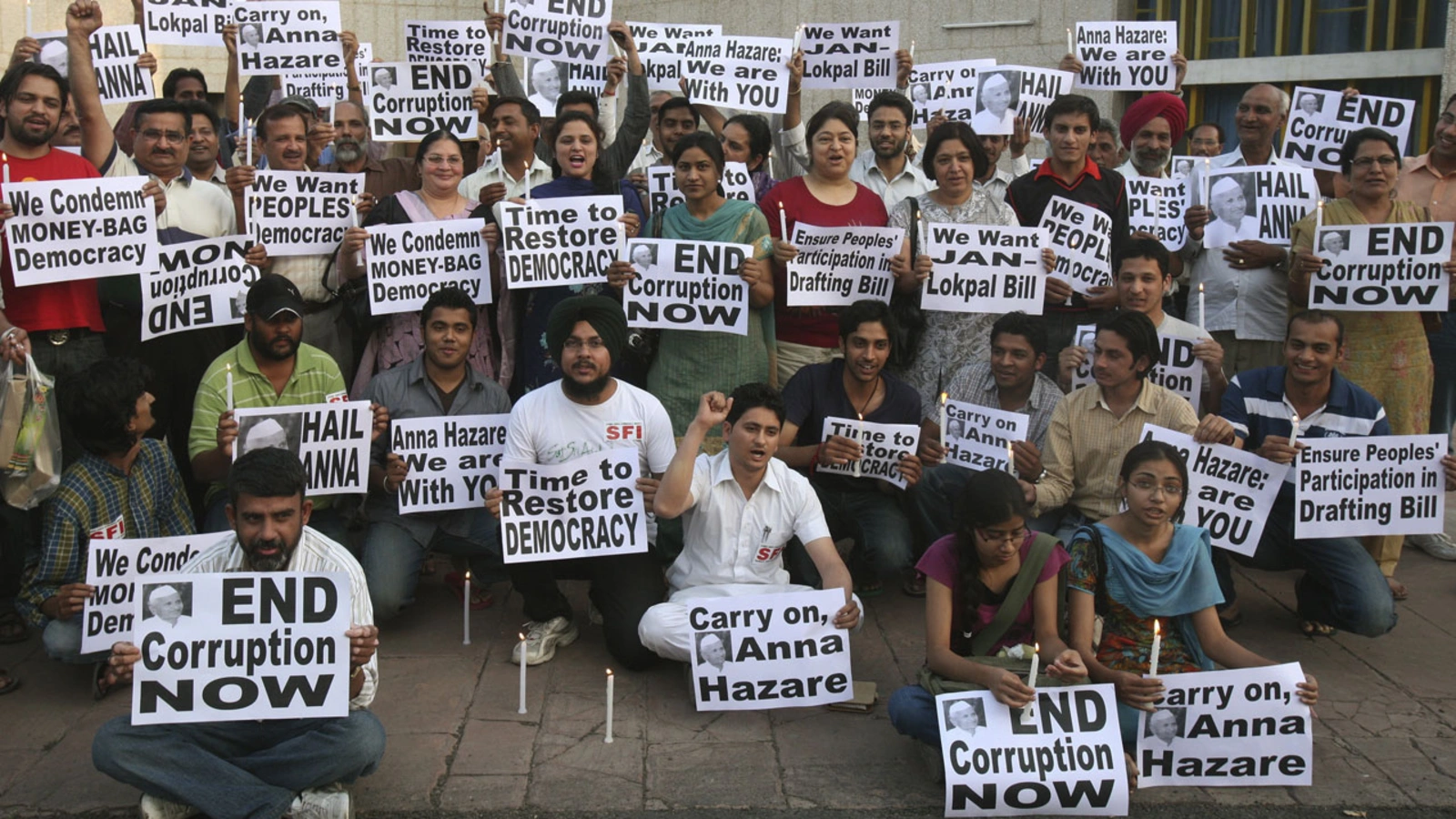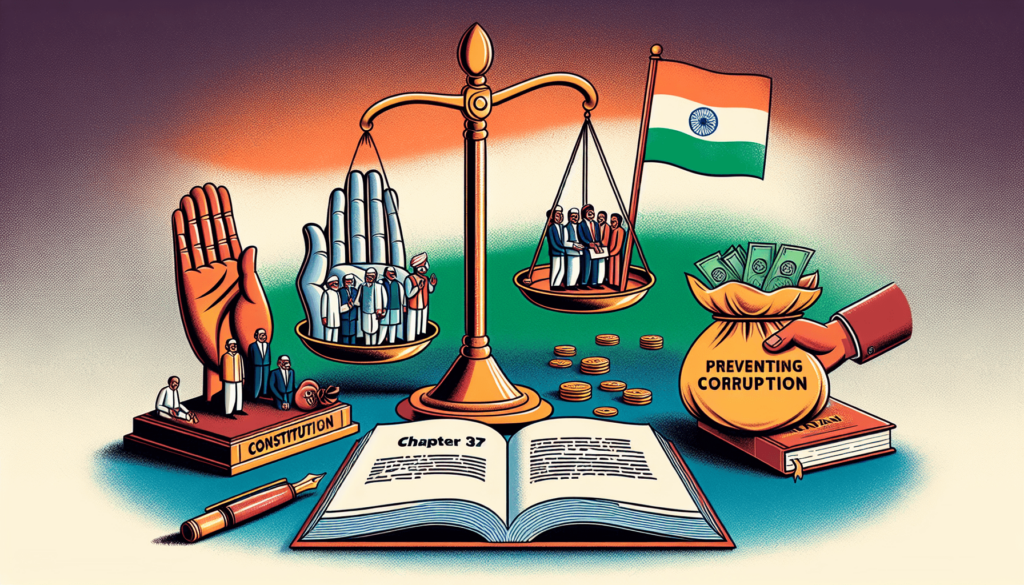Why India’s Corrupt Officials Laugh Off Transfers And Suspensions? How Many More Officials Will Escape Justice Through A System That Only Pretends To Punish?
Government corruption is a cancer that slowly eats away public trust, undermines economic growth, and entrenches social inequality. Indian perceptions of corruption are staggeringly high, with CPI scoring for the year 2023 at just 39 out of 100, placing the country 93rd out of 180 nations assessed by Transparency International. This score means that there is stagnation in the fight against corruption because it scores only a minimal decrease from 40 in 2022 and its highest score from back in 2018. Helplessness in transferring or suspension of corrupt officials has been canvassed through one case after another, where people continue exercising influence and indulging in corruption even when disciplinary measures against them have been meted out.

Government corruption is one of the most serious threats to all countries. It erodes trust, thrusts back economic activities, and shakes societies as well. Corruption of government servants has become a common issue in India. There are multiple approaches towards the fight against the menace of corruption, but the commonly applied response mechanism has been to transfer or suspend the concerned employee.
The procedure needs to be revised. Just shifting or suspending a corrupt or dishonest official does not address the core problem that promotes corruption and arrogance. Instead, it meets the momentary cosmetic solution and, more often than not, pacifies public outrage without presenting even an iota of justice.
The Scale of Corruption in India
Corruption in Indian government agencies is systemic and has permeated all levels and sectors. It comes under various hues and colours, whether it be termed as bribery, favouritism, embezzlement, or an excess of power. Almost every government department is affected by this, ranging from local office levels to the top-most officials. As per the data compiled, this is not an isolated incident; rather, it is a pattern or behaviour well embedded within the system.
Total Cases of Corruption as per Official Data
The position of India in the global Corruption Perceptions Index (CPI) alone presents a rather clear indication of the severity of the problem.
- In 2023, India ranked 93 among 180 nations with a score of 39 out of 100 on the CPI.
- Given this very low rating, it would be proper to interpret that India has been widely perceived as a highly dishonest nation and that she has not made serious progress over the years. India improved slightly in 2022 to score 40, but from 2018, this number has stayed the same and even stood at its highest at 41.
Decline from that peak marks inconsistent efforts to stem the corruption tide. Further proof of this fact is given by the figures coming from the central anti-graft offices in India. In 2017-2021, the Central Bureau of Investigation (CBI) filed over 715 cases against central government employees. The cases involved over 1,200 officials, who had all been accused of various degrees of malpractice.
DoPT claims that in excess of 118 prosecution sanctions are pending on corruption cases against public servants. What the notorious delays by prosecutions show is that it is often the system itself that throws hurdles in its own way and lets dishonest officers off the hook.
Thousands of cases of bribery and misuse of power at the lower level are reported to state Anti-Corruption Bureaus.
These statistics prove that corruption is a widespread phenomenon, and the measures adopted are not proper. Transfers and suspensions, in applied cases, are doings which don’t reach the roots of this corruption and often do not yield a prominent impact.
Why Transfers and Suspensions Are Ineffective Solutions?

Among the most common administrative reactions to corruption’s discovery or an officer who is suspected of corruption is either to transfer someone elsewhere or to suspend them for some time. These measures are very much symbolic, as the purpose is more often just for appearances, rather than as any serious exercise in accountability. Here are several reasons why transfers and suspensions do not work:
Under this system, the transfer of an officer merely transposes an officer from one post to another. The transfer allows the officer to continue such practices in their new posting. Neither is it a real penalty for misbehaviour and so allows them to become evasive of serious consequences due to unchecked corrupt behaviour.
Many politicians enjoy close connections in the political machinery. This patronage will allow them to use their connections in helping to contain the effect of such retributions. Even if they are transferred or suspended, political connections will place them back in influential positions or allow them to return over time to a position of power. It will thus continue to be a cycle of little interruption to dishonest officials.
Transfer and suspension fail to deter the other officials. As these responses are more temporary inconveniences than punishment, they don’t provoke fear or adherence to the ethical demands. Officials mostly receive transfers or suspension as minor occupational hazards and continue with corrupt practices and actions as if nothing has happened.
For the public, transfers and suspensions form superficial solutions to the essence of an issue. Where there is public uproar on a large scale, these prove to be mere stopgaps that do not respond to calls for justice. People become sceptical of the government’s capacity to curb corruption with time and lose trust in the institution.
Failure of Transfers and Suspensions: Case Studies
Coal Scam: The Story of Meagre Sanctions
In a 2012 sting operation, it was revealed that the top officials were alleged to have distributed coal blocks to select private companies.
Among the central characters of this scam was Parakh, an erstwhile Coal Secretary. While several transfers marked his career, the transfers did not silence his clout or reduce the culture of corruption in his department. Serious charges notwithstanding, Parakh continued to operate with relative impunity, and he faced no meaningful consequences from his role in the scam.
His case shows that even transfers as a counter measure do not prevent individuals from going about the practice of corruption, nor do they effectively punish the perpetrators. The Narada Sting Operation: Political influence and the limits of suspension. 30 May 2016 Narada sting operation, carried out in West Bengal, exposed high-profile politicians and government officials accepting bribes on camera. Many of the top leaders in Trinamool Congress were given money for various favours.
There are proofs in thin air, but prosecution sanctions have been delayed for years together only because of bureaucratic red tape and political influence. Most of these officials received only temporary suspensions or transfers but continued with positions of great power.
This case shows that mere suspension and transfer are little to separate dishonest officials from positions of power. Instead, the scam operators used their political connections to get out of meaningful punishment and remain in control of their spaces. The Vyapam Scam: A Highly Institutionalised Scheme of Corruption The Vyapam scandal in Madhya Pradesh is one of the most renowned cases of institutionalised corruption in India.
It has involved mass cheating in admission examinations and recruitment schemes, harming thousands of students and job seekers in government departments.

Causes of Corruption and Arrogance within the Government Employees
In order to understand why transfers and suspensions fail, one must find out the causes for corruption and arrogance of government people. These root causes create an environment where misconduct becomes normal and procedural actions are easily bypassed.
There is a law that punishes dishonest behaviour, but implementation is weak. Accountability mechanisms either need to be more adequate or be hampered by petty bureaucratic red tape. If transferred and not punished, the right messages are sent to the effect that corruption is taken lightly.
The corrupt officers usually keep strong ties with high-profile politicians. Such patronage helps them to avoid any repercussions as they can easily resort to patron-client relations to wriggle out of prosecutions or get favoured transfers. The system of supportive nexus of politicians surrounding such officers has created an air of invincibility and arrogance.
Most cases related to corruption in India take long to get processed due to bureaucratic red tape and judicial backlogs. Bureaucratic delays reduce the chances of prosecution and encourage dishonest officers to continue their exploitation because they know that they will not be held accountable.
Corruption has become a culture in certain sections of the administration. Officials believed that bribery and other corrupt practices came with the job. They had become owed benefits by virtue of their position. This sense of entitlement breeds arrogance since officials now seem immune to the consequences of their actions.
Effective Solutions on How to Check Corruption and Arrogance?
Government corruption calls for much more than just cosmetic administrative reforms: systemic reforms that address the root causes of corruption and set the structure for accountability, openness, and honest governance. Among some of the proposed solutions listed below is legislative strengthening and speedy justice.
The Prevention of Corruption Act should be overhauled to make the process of sanctioning prosecutions against government employees streamlined. From the current system, most government officials accused of corruption sometimes do not end up before court because of the lengthy approval processes. With the amended act, it would be easier to prosecute dishonest officials and also cut political influence.
Separate fast-track courts should be established for cases of corruption. This will provide speedy legal resolution of cases with little delay. The wrongdoing will face swift judiciary, which in turn will scare the wrongdoer because he knows that corruption has real and immediate implications. Such courts should be established at both state and central levels to ensure that cases across India are addressed.
Building up transparency and public vigilance

Many employees in the public sector are afraid of whistleblowing against dishonest activities due to fear of retaliation. Strong whistleblower protection laws should enable a vast number of employees to feel safe while reporting misconduct because this fear of being victimised by losing jobs or facing harassment will deter individuals from fighting dishonest activities within government organisations.
An RTI Act has truly contributed to enforcing much transparency; however, it is definitely limited in its ability. Strengthening the RTI Act can give way for citizens to have more access to government records, thereby raising public oversight. Increasing transparency will make it harder for dishonest practices because there will be increased visibility of government operations.
Promotion of Ethical Governance Culture
There must be regular training on ethics and consequences of corruption for public officials so that they portray the social and economic implications that result from dishonest practices by public servants and take these public servants through their responsibilities in fulfilling their administrative roles and call for higher citizenship, towards a culture of ethical governance.
Performance evaluations tied not only to the output of the employee but to their ethical standards will drive integrity. Promotion and career advancement tied to ethical behaviour will make it crystal clear that corruption will not advance but block a person’s career.
Independent Anti-Corruption Oversight
Institutionalise anti-corruption oversight commissions. Corruption cases are handled by such independent oversight commissions. They would be free from politics and ensure that the case runs efficiently and fairly. Monitoring corruption investigations by these commissions would add another layer of accountability.
Lokpal and Lokayuktas. Strengthen Lokpal institutions at the national level and Lokayuktas on the state level to have direct roles in investigating and prosecuting cases against corruption. These institutions must be empowered and given a proper toolkit, resources, and legal authorities before they can carry out their duties directly to control the misbehaviour of the government.
Moving Beyond Temporary Fixes to Meaningful Reform
India requires a fundamental change in the approach to fight corruption among its government employees. Transfers and suspensions, though they happen frequently, do not come to the root of the problem: corruption continues to thrive unabated.
Short-term relief measures cannot be deterrents; they can achieve only short-term relief. The solution indeed lies in overall reform that includes legal change, transparency, ethical governance culture, and independent oversight.
If these reforms are implemented, India will be well on its way to having an accountable, just, and responsive government on behalf of the citizens. Only through systemic reform can this country hope to rid itself of the corruption that has long plagued its public institutions.




